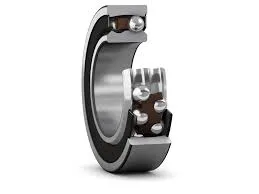
Nov . 20, 2024 20:22 Back to list
radial clearance of spherical roller bearing
Understanding Radial Clearance in Spherical Roller Bearings
Spherical roller bearings are an essential component in various mechanical systems, particularly those requiring high load capacity and the ability to accommodate misalignment. One critical aspect of their design and functionality is the radial clearance, which plays a significant role in their performance, longevity, and efficacy in application.
What is Radial Clearance?
Radial clearance refers to the internal space within a bearing measured perpendicular to the shaft. It is defined as the difference between the radial internal dimension (the distance from the center of the inner ring to the center of the outer ring) and the radial external dimension (the distance from the outer circumference of the inner ring to the inner circumference of the outer ring). This clearance is crucial as it affects the fit and operation of the bearing in application.
Importance of Radial Clearance
The radial clearance in spherical roller bearings is vital for several reasons
1. Accommodating Misalignment Spherical roller bearings are designed to handle misalignment due to their inherent geometric design. Radial clearance allows the bearing to adjust and accommodate slight shifts in alignment without incurring excessive stress or damage.
2. Thermal Expansion When machinery operates, components can heat up, leading to thermal expansion. Sufficient radial clearance accounts for this expansion, preventing interference between the rolling elements and the raceways.
3. Load Distribution Proper radial clearance ensures optimal load distribution across the bearing surfaces. Insufficient clearance can lead to contact between the rolling elements and raceways, causing increased friction, wear, and ultimately, bearing failure.
4. Vibration and Performance Bearings with appropriate radial clearance tend to perform better in terms of vibration and noise. Insufficient clearance may lead to increased operational noise and reduce the lifespan of the bearing due to excessive wear and vibration.
5. Lubrication Adequate radial clearance facilitates the formation of a lubricating film between rolling elements and raceways. This is essential in minimizing friction and preventing overheating during operation.
radial clearance of spherical roller bearing

Types of Radial Clearances
In spherical roller bearings, radial clearances can be categorized into three primary types
1. C1 Clearances These are the smallest clearances, ideal for applications with higher speeds where precise fits are essential.
2. C2 Clearances Slightly larger than C1, C2 clearances are suitable for applications with moderate speeds and loads.
3. C3 Clearances These are larger clearances, best for applications where thermal expansion is significant or where misalignment is a possibility.
Selecting the Right Radial Clearance
Choosing the correct radial clearance is pivotal in ensuring the bearing's longevity and performance. Factors to consider when selecting the appropriate clearance include
- Operating Conditions Temperature, speed, and load conditions can influence the required clearance. - Type of Application Applications that involve high misalignment or thermal fluctuations may necessitate larger clearances. - Bearing Material and Design Different bearings may have varying tolerances and material properties that affect their optimal operating clearance.
Conclusion
In summary, radial clearance is a critical design element in spherical roller bearings that significantly impacts their performance and reliability. Understanding the nuances of radial clearance and its implications in various applications aids engineers and maintenance personnel in selecting the right bearings for their needs. A well-chosen radial clearance not only enhances the functionality of mechanical systems but also plays a crucial role in preventing premature failures and optimizing operational efficiency. Whether in heavy machinery, automotive applications, or industrial equipment, the correct implementation of radial clearance in spherical roller bearings is a fundamental aspect of sound engineering practice.
Latest news
-
Premium Deep Groove Ball Bearings | High Speed & Reliability
NewsAug.29,2025
-
Durable Scaffolding Clamps - Secure & Reliable Tube Connectors
NewsAug.28,2025
-
Common Failures in Thrust Ball Bearings and Solutions
NewsAug.22,2025
-
How Tapered Roller Bearings Can Take Shock Loads
NewsAug.22,2025
-
Angular Bearings in High-Precision Spindles
NewsAug.22,2025
-
The Impact of Misalignment on Cylindrical Roller Bearing Performance
NewsAug.22,2025
